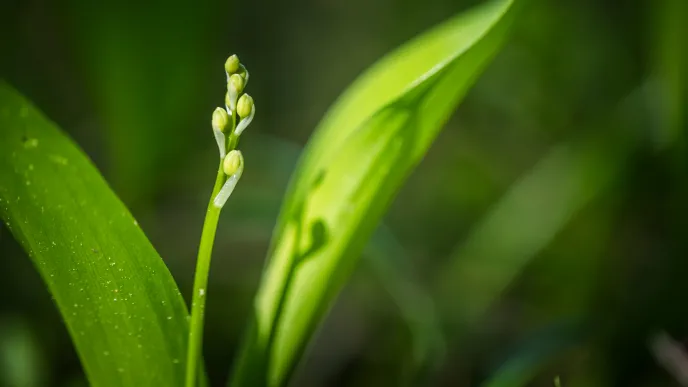The Intergovernmental Panel on Climate Change (IPCC) released the third part of its sixth assessment report in April 2022. The report states that the Earth's climate is rapidly deteriorating but also presents solutions.The report cites LUT University's research on ambitious mitigation pathways and novel technology options.
According to the IPCC's latest working group report, we need to work fast to mitigate climate change and capture carbon from the atmosphere. Businesses, communities and individuals need to take action. Governments need to apply strong political and economic steering to support sustainability.
The goal of the international Paris Agreement is to limit global warming to well below 2, preferably to 1.5 degrees Celsius, compared to pre-industrial levels. To achieve this goal, greenhouse gases of a human origin and carbon sinks should be balanced by the latter half of this century.
Every few years, the IPCC complies an assessment report on scientific data on climate change, its impacts, and possibilities to mitigate and adjust to it.
LUT's scientific solutions
The third part of the most recent IPCC assessment report substantially draws on LUT University's ambitious research. The report refers to 38 scientific papers by LUT and cites them 54 times overall. LUT examines the mitigation of climate change from the perspectives of technology, economics, society and the environment.
According to its strategy, LUT seeks solutions for clean energy, water and air and sustainable business by applying its expertise in technology and business.
Esa Vakkilainen is one of the peer reviewers of the report, an energy technology professor at LUT and a member of the Research Council for Natural Sciences and Engineering of the Academy of Finland. Professor Vakkilainen emphasizes the utilization of bioenergy as an essential way to promote sustainable development.
"Especially biowaste and agriculture and forestry by-products can be used as raw materials for fuels to replace fossil products, such as textiles and packaging, all over the world. The utilization of biomass already in circulation promotes each country's self-sufficiency, but the raw material also has a global market," Vakkilainen points out.
LUT's research on the energy transition and power-to-x (PtX or P2X) is cited in the report. P2X technologies play a key role in creating a carbon-neutral world. They enable producing synthetic electricity-based e-fuels, e-chemicals or fertilizers from air and water with renewable electricity.
The report closely cites LUT's research on the direct air capture of carbon dioxide (CO2) for carbon-neutral e-fuels and net-negative CO2 emissions.
Renewable electricity can be generated with wind and solar power, for example. Christian Breyer, LUT University's solar economy professor and a member of the Finnish national IPCC group, and his research team have modelled how countries, entire continents and the world could give up fossil fuels by using tools such as P2X technologies.
"The rapidly declining unit costs of solar and wind power, batteries, electrolysers, and various PtX technologies will enable a technically feasible and economically viable fully sustainable energy system by 2050. This is particularly relevant for the Global South, where billions of energy-hungry people are pursuing a higher standard of living," Breyer sums up.
Focus on systems and individuals
The IPCC report also underlines the individual person's strong possibilities to make a difference. Choices related to issues such as food and transport may help curb climate change.
LUT University's sustainability science research team was the world's first to launch a personal carbon trading scheme. The scheme was piloted in the city of Lahti, revealing that a carbon trading app and cutting back on the use of private cars could contribute to the reduction of greenhouse gas emissions.
Also changes to other consumer behaviours and habits can impact sustainability and increase the demand for responsible products and services.
Solutions that mitigate climate change should aim for systemic sustainability and global equity. People should avoid actions that promote the loss of biodiversity or the extreme effects of climate change, such as natural disasters or climate migration.
In this video, LUT University explains how systemic change is connected to solving the climate crisis.
Lisätietoa:
The IPCC's third part of the Sixth Assessment Report, Climate Change 2022: Mitigation of Climate Change, the Working Group III contribution.
LUT articles cited in the third part of IPCC's Sixth Assessment Report, Climate Change 2022:
- Aghaei, J., and M.-I. Alizadeh, 2013: Demand response in smart electricity grids equipped with renewable energy sources: A review. Renew. Sustain. Energy Rev., 18, 64–72, https://doi.org/10.1016/j.rser.2012.09.019
- Aghahosseini A. and Breyer C., 2018. Assessment of Geological Resource Potential for Compressed Air Energy Storage in Global Electricity Supply, Energy Conversion and Management, 169, 161-173, https://doi.org/10.1016/j.enconman.2018.05.058
- Barbosa, L. S. N. S., D. Bogdanov, P. Vainikka, and C. Breyer, 2017: Hydro, wind and solar power as a base for a 100% renewable energy supply for South and Central America. PLoS One, 12(3), 1–28, https://doi.org/10.1371/journal.pone.0173820 .
- Bogdanov, D., Farfan J., Sadovskaia K., Aghahosseini A., Child M., Gulagi A., Oyewo A.S., Barbosa L.S.N.S., Breyer C., 2019: Radical transformation pathway towards sustainable electricity via evolutionary steps. Nat. Commun., 10, 1077, https://doi.org/10.1038/s41467-019-08855-1 .
- Bogdanov, D., A. Gulagi, M. Fasihi, and C. Breyer, 2021: Full energy sector transition towards 100% renewable energy supply: Integrating power, heat, transport and industry sectors including desalination. Appl. Energy, 283, 116273, https://doi.org/10.1016/j.apenergy.2020.116273 .
- Breyer C., Tsupari E., Tikka V., Vainikka P., 2015. Power-to-Gas as an emerging profitable business through creating an integrated value chain, Energy Procedia, 73, 182-189, https://doi.org/10.1016/j.egypro.2015.07.668
- Breyer C., Heinonen S., Ruotsalainen J., 2017. New Consciousness: A societal and energetic vision for rebalancing humankind within the limits of planet Earth, Technological Forecasting and Social Change, 114, 7-15, https://doi.org/10.1016/j.techfore.2016.06.029
- Breyer C., Khalili S., Bogdanov D., 2019. Solar photovoltaic capacity demand for a sustainable transportation sector to fulfil the Paris Agreement by 2050, Progress in Photovoltaics: Research and Applications, 27, 978-989; https://doi.org/10.1002/pip.3114
- Breyer C., Fasihi M., Bajamundi C., Creutzig F., 2019. Direct Air Capture of CO2 – A key technology for ambitious climate change mitigation, Joule, 3, 2053-2057; https://doi.org/10.1016/j.joule.2019.08.010
- Breyer C., Fasihi M., Aghahosseini A., 2020. Carbon Dioxide Direct Air Capture for effective Climate Change Mitigation based on Renewable Electricity: A new Type of Energy System Sector Coupling, Mitigation and Adaptation Strategies for Global Change, 25, 43-65; https://doi.org/10.1007/s11027-019-9847-y
- Breyer, C., and M. Jefferson, 2020: Use and Abuse of Energy and Climate Scenarios—A Week of 3controversy on Scenarios. Econ. Energy Environ. Policy, 9, https://doi.org/10.5547/2160-5890.9.1.mjef .
- Caldera, U., and C. Breyer, 2020: Strengthening the global water supply through a decarbonised global desalination sector and improved irrigation systems. Energy, 200, 117507, https://doi.org/10.1016/j.energy.2020.117507 .
- Child, M., C. Kemfert, D. Bogdanov, and C. Breyer, 2019: Flexible electricity generation, grid exchange and storage for the transition to a 100% renewable energy system in Europe. Renew. Energy, 139, 80–101, https://doi.org/10.1016/j.renene.2019.02.077 .
- Creutzig, F., C. Breyer, J. Hilaire, J. Minx, G. P. Peters, and R. Socolow, 2019: The mutual dependence of negative emission technologies and energy systems. Energy Environ. Sci., 12, 1805–1817, https://doi.org/10.1039/C8EE03682A .
- Farfan, J.and C. Breyer, 2017: Structural changes of global power generation capacity towards sustainability and the risk of stranded investments supported by a sustainability indicator. J. Clean. Prod., 141, 370–384, https://doi.org/10.1016/j.jclepro.2016.09.068
- Farfan J. and Breyer C., 2018. Combining floating solar photovoltaic power plants and hydropower reservoirs: A virtual battery of great global potential, Energy Procedia, 155, 403-411, https://doi.org/10.1016/j.egypro.2018.11.038
- Farfan J., Lohrmann A., Breyer C., 2019. Integration of Greenhouse Agriculture to the Energy Infrastructure as an alimentary Solution, Renewable and Sustainable Energy Reviews, 110, 368-377; https://doi.org/10.1016/j.rser.2019.04.084
- Fasihi M., Bogdanov D., Breyer C., 2016. Techno-Economic Assessment of Power-to-Liquids (PtL) Fuels Production and Global Trading Based on Hybrid PV-Wind Power Plants, Energy Procedia, 99, 243-268, https://doi.org/10.1016/j.egypro.2016.10.115
- Fasihi M., Bogdanov D., Breyer C., 2017. Long-Term Hydrocarbon Trade Options for the Maghreb Region and Europe – Renewable Energy Based Synthetic Fuels for a Net Zero Emissions World, Sustainability, 9, 306, https://doi.org/10.3390/su9020306
- Fasihi M., Efimova O., Breyer C., 2019. Techno-economic assessment of CO2 direct air capture plants, Journal of Cleaner Production, 224, 957-980; https://doi.org/10.1016/j.jclepro.2019.03.086
- Fasihi M. and Breyer C., 2020. Baseload electricity and hydrogen supply based on hybrid PV-Wind power plants, Journal of Cleaner Production, 243, 118466; https://doi.org/10.1016/j.jclepro.2019.118466
- Fasihi M., Weiss R., Savolainen J., Breyer C., 2021. Global potential of green ammonia based on hybrid PV-wind power plants, Applied Energy, 294, 116170; https://doi.org/10.1016/j.apenergy.2020.116170
- Golroudbary, S. R., D. Calisaya-Azpilcueta, and A. Kraslawski, 2019: The life cycle of energy consumption and greenhouse gas emissions from critical minerals recycling: Case of lithium-ion batteries. Procedia CIRP, 80, 316–321.
- Haegel, N. M., Atwater Jr. H., Barnes T., Breyer C., and Coauthors, 2019: Terawatt-scale photovoltaics: Transform global energy. Science ., 37 364, 836–838, https://doi.org/10.1126/science.aaw1845
- Hansen, K., C. Breyer, and H. Lund, 2019: Status and perspectives on 100% renewable energy systems. Energy, 175, 471–480, https://doi.org/10.1016/j.energy.2019.03.092 .
- Horvath S., Fasihi M., Breyer C., 2018. Techno-Economic Analysis of a Decarbonized Shipping Sector: Technology Suggestions for a Fleet in 2030 and 2040, Energy Conversion and Management, 164, 230-241, https://doi.org/10.1016/j.enconman.2018.02.098
- Khalili S., Rantanen E., Bogdanov D., Breyer C., 2019. Global Transportation Demand Development with Impacts on the Energy Demand and Greenhouse Gas Emissions in a Climate-Constrained World, Energies, 12, 3870; https://doi.org/10.3390/en12203870
- Kuokkanen, A., M. Sihvonen, V. Uusitalo, A. Huttunen, T. Ronkainen, and H. Kahiluoto, 2020: A proposal for a novel urban mobility policy: Personal carbon trade experiment in Lahti city. Util. Policy, 62, https://doi.org/10.1016/j.jup.2019.100997
- Lipiäinen, S., and E. Vakkilainen, 2021: Role of the Finnish forest industry in mitigating global change: energy use and greenhouse gas emissions towards 2035. Mitig. Adapt. Strateg. 23 Glob. Chang., 26(2), 1–19, doi:10.1007/S11027-021-09946-5/FIGURES/3.
- Lohrmann, A., J. Farfan, U. Caldera, C. Lohrmann, and C. Breyer, 2019: Global scenarios for significant water use reduction in thermal power plants based on cooling water demand estimation using satellite imagery. Nat. Energy, 4(12), 1040–1048, https://doi.org/10.1038/s41560-019-0501-4 .
- Oyewo, A. S., A. Aghahosseini, M. Ram, A. Lohrmann, and C. Breyer, 2019: Pathway towards achieving 100% renewable electricity by 2050 for South Africa. Sol. Energy, 191(June), 549–565, https://doi.org/10.1016/j.solener.2019.09.039 .
- Oyewo A.S., Aghahosseini A., Ram M., Breyer C., 2020. Transition towards decarbonised power systems and its socio-economic impacts in West Africa, Renewable Energy, 154, 1092-1112; https://doi.org/10.1016/j.renene.2020.03.085
- Proskurina, S., M. Junginger, J. Heinimö, B. Tekinel, and E. Vakkilainen, 2019a: Global biomass trade for energy— Part 2: Production and trade streams of wood pellets, liquid biofuels, charcoal, industrial roundwood and emerging energy biomass. Biofuels, Bioprod. Biorefining, 13, 371–387, https://doi.org/10.1002/bbb.1858.10
- Proskurina, S., M. Junginger, J. Heinimö, B., and E. Vakkilainen, 2019b: Global biomass trade for energy – Part 1: Statistical and methodological considerations. Biofuels, Bioprod. Biorefining, 13, 358–370, https://doi.org/10.1002/bbb.1841
- Ranta, V., L. Aarikka-Stenroos, P. Ritala, and S. J. Mäkinen, 2018: Exploring institutional drivers and barriers of the circular economy: A cross-regional comparison of China, the US, and Europe. Resour. Conserv. Recycl., 135, 70–82, https://doi.org/10.1016/j.resconrec.2017.08.017
- Solomon A.A., Bogdanov D., Breyer C., 2019. Curtailment-storage-penetration nexus in the energy transition, Applied Energy, 235, 1351-1368, https://doi.org/10.1016/j.apenergy.2018.11.069
- Vartiainen, E., G. Masson, C. Breyer, D. Moser, and E. Román Medina, 2020: Impact of weighted average cost of capital, capital expenditure, and other parameters on future utility‐scale PV levelised cost of electricity. Prog. Photovoltaics Res. Appl., 28(6), 439–453, 11 https://doi.org/10.1002/pip.3189 .
- Victoria M., Haegel N., Peters I.M., Sinton R., Jäger-Waldau A., Cañizo C., Breyer C., Stocks M., Blakers A., Kaizuka I., Komoto K., Smets A., 2021. Solar photovoltaics is ready to power a sustainable future, Joule, 5, 1041-1056; https://doi.org/10.1016/j.joule.2021.03.005
Lisätietoja:







